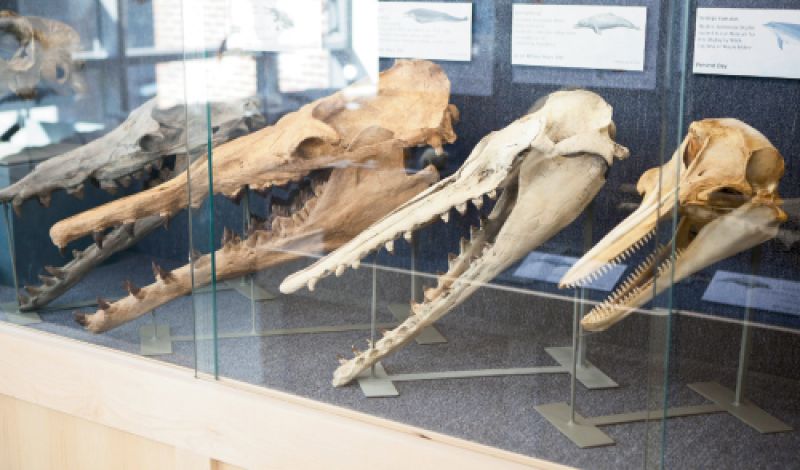
Nearly 3.5 billion years ago, bacteria in today’s Western Australia formed structures called ”stromatolites.” An example of these fossilized remains resides in the Mace Brown Museum of Natural History at the College of Charleston, along with other bones, teeth, and staggeringly old representations of past life forms. Most creatures—from mastodons to sea turtles—in the attraction once inhabited South Carolina.
Last November, an exciting new exhibit arrived, offering a look into the “Evolution of Whales” via 26- to 31-million-year-old fossils. “There aren‘t any other exhibits in the world that have such awesome examples of the evolutionary process of whales, side by side, on display for the public,” says museum curator Mace Brown. Starting with the Maiacetus inuus, which could walk on land, viewers can see how the mammals changed ”from landlubbers to aquatic acrobats,” over a period of 20 million years, says Brown.
Visit the free museum from 11 a.m. to 4 p.m. daily, except on Wednesdays, at 202 Calhoun Street.